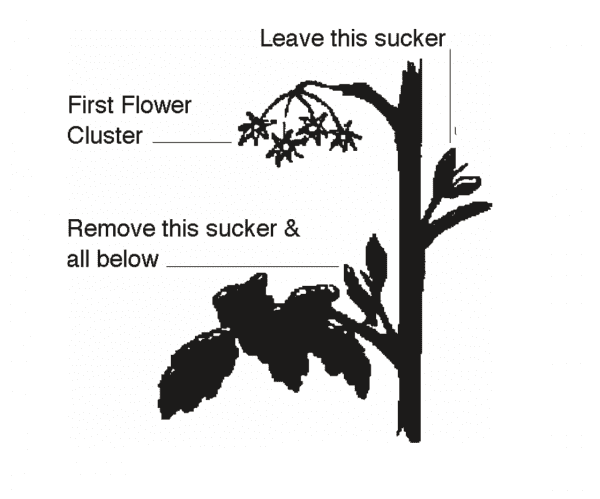Lawn & Garden

Practicing these simple pruning techniques will help you produce healthier tomato plants with larger fruit.
Pruning helps tomato plants maintain a balance between vegetative and reproductive growth. If you do not prune or prune very little, your tomato plants will produce excessive vegetative growth with reduced fruit size. Moderate pruning will leave your plants with smaller vines and larger fruit that will mature earlier. Pruning also keeps plants and fruit off the ground, helping to control diseases.
 Although pruning requires a lot of effort, the benefits include more marketable fruit, easier harvesting, and reduced injury to plants when multiple harvests are being made. This practice is most profitable when a long harvest season is possible and when there is uniform fruit production over the season.
Although pruning requires a lot of effort, the benefits include more marketable fruit, easier harvesting, and reduced injury to plants when multiple harvests are being made. This practice is most profitable when a long harvest season is possible and when there is uniform fruit production over the season.
The most common method of pruning is to prune to a two-stemmed plant by pinching off lateral branches (suckers) as they appear in the axils of each leaf. To achieve this balance, remove all the suckers up to the one immediately below the first flower cluster (see figure).
A single pruning usually will be adequate, although a later pruning may be needed to remove suckers growing from the ground at the base of the plant. Suckers should be removed when small, no more than 2 to 4 inches in length. Letting them get large wastes plant energy and provides an entry point for plant pathogens.
Prune early in the morning after plants have dried. Indeterminate varieties may need to be topped if the vines grow above the top of the stakes. Use a knife or pruners.
 Joseph Kemble, Extension Vegetable Specialist and Horticulture Professor; Kerry Smith, Extension Associate, Horticulture, both at Auburn University
Joseph Kemble, Extension Vegetable Specialist and Horticulture Professor; Kerry Smith, Extension Associate, Horticulture, both at Auburn University
Revised July 2020, Pruning Fresh-Market Tomatoes, ANR-1060

